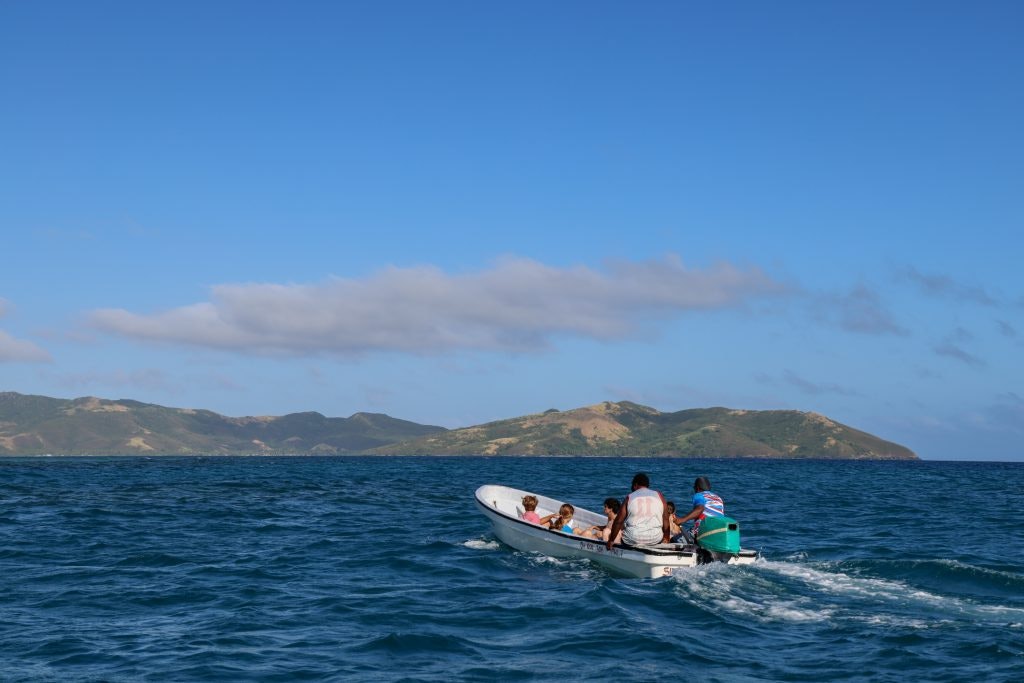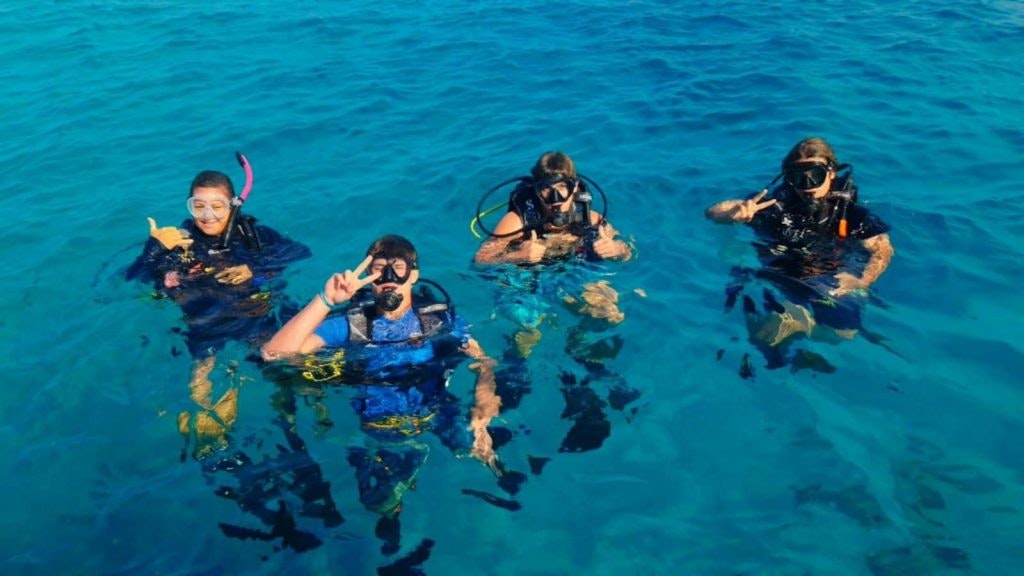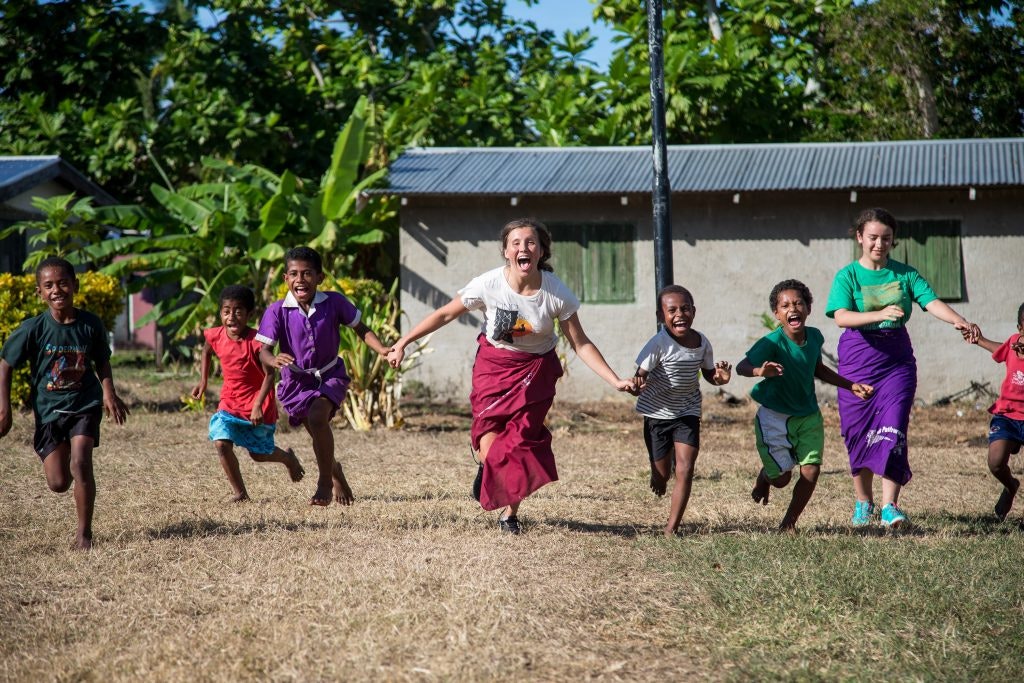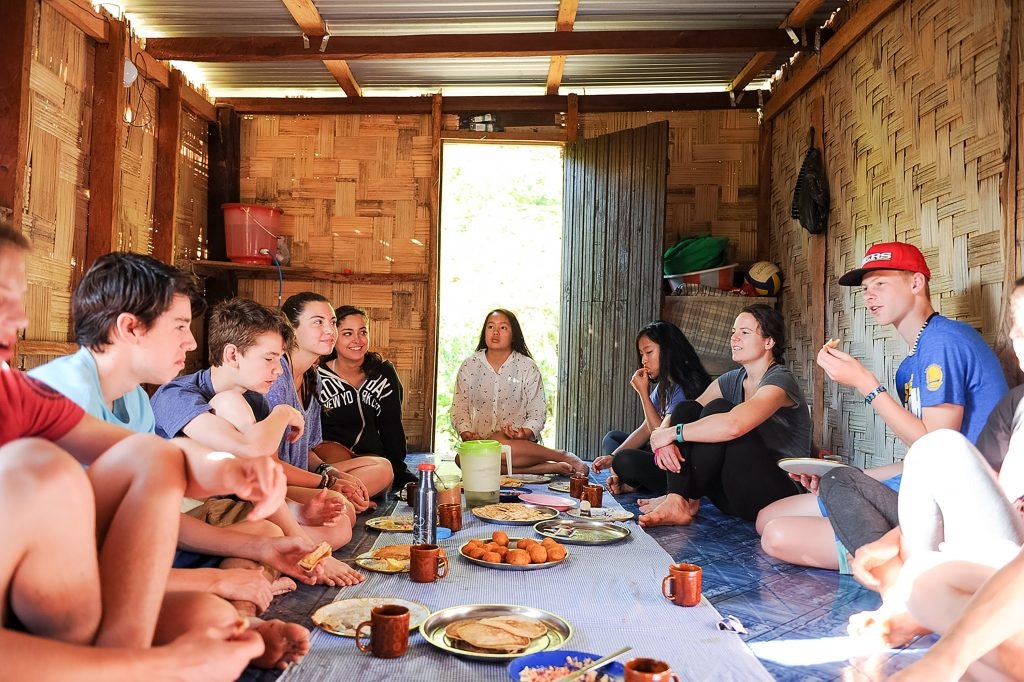1. Fiji is made up of over 300 islands and 90% of the territory is water
Fiji consists of 332 tropical islands but only 110 of the islands are inhabited. Despite the sheer number of islands and islets, Fiji’s territory is only 10% land. Vanua Levu and Viti Levu are the two largest islands and are home to around 87% of the nation’s population, which is over 900,000. Viti Levu is also where the famous Fiji water is bottled and the location of Nandi International Airport. Visitors wishing to visit other islands, such as the scenic Denarau, can travel by light aircraft or boat.
Around 90% of land is owned by Indigenous Fijians and this land, called iTaukei, is divided by clan. A mere 8% of the land is privately owned and the remaining 2% belongs to the government.

Copyright: © 2022 Rustic Pathways
2. Fiji is known as the soft coral capital of the world

Students preparing to snorkel in the Fiji coral reefs
In addition to the pristine sandy beaches and ocean views, there’s plenty to see under the water, too. This ‘soft coral capital of the world,’ as named by oceanographer Jacques Cousteau, is home to 390 different coral species spread across 10,000 square kilometers of coral reefs. This wide array makes Fiji’s coral reefs some of the most extensive in the Indo-Pacific region. In fact, the coral reefs are so treasured that the government implemented a conservation project in 2003 to ensure their safety. One of the most popular places for visitors is the Namena Reef, where one can see a large variety of colorful coral and over 1,000 species of fish.
3. Fiji has three official languages
Fiji’s inhabitants speak a combination of English, Fiji Hindi (or Fijian Hindi) and Fijian. Fijian is spoken as a first language by most indigenous Fijians. “Bula” (Hello) and “Vinaka” (Thank you) are two useful Fijian words for travelers to equip themselves with when visiting if they want to exchange friendly greetings with locals. However, it’s not necessary to learn a new language as English is taught in Fiji’s schools, which makes communication on your vacation very easy.

Students playing with local children on an island in Fiji
4. Fiji is a cultural melting pot
Indo-Fijians, those of Indian descent, make up around 40% of the population. This is partly due to the nation’s colonial history. Fiji was a British colony from 1874 to 1970, and between 1879 and 1916, 60,000 Indians were brought over as indentured laborers to work on sugarcane plantations. This change in the demographics of the country had a large impact on the language, religion and food. Visitors to this vibrant archipelago can sample flavorful Indian curries made with local ingredients and take a trip to see Sri Siva Subramaniya Swami Hindu temple in Nadi, which is the largest Hindu temple in the southern hemisphere.
Fiji boasts a mix of Indian, Chinese, European and indigenous cultures, which can be seen in the variety of foods eaten on the islands. It can also be seen in the religions practiced in Fiji, as the majority of the population is Christian, but there are also many followers of Hinduism and Islam. The indigenous people of Fiji, known as Fijians, have had a large influence on the culture. Visitors can experience traditional Fijian culture by watching fan dances or picking up some traditional pottery.

5. In Fiji you can stand in the past and present at once
Visitors to the island of Taveuni can experience the past and the present at once as the International Date Line runs right through it. Though it can be a novel experience to jump between the two, the attraction is not very elaborate. The date line itself is marked by two signboards, with one marked “past” and the other “present,” and makes for a good photo opportunity.
6. Fiji was once called the ‘Cannibal Isles’
Cannibalism has a long history in Fiji, with some estimates stating that it dates back around 2,500 years. However, this was not widely known until Europeans traveled to the South Pacific in the 1800s. Thomas Baker, a British missionary, was killed and eaten in Fiji in 1867. The remains of the soles of his shoes can be seen displayed at the Fiji Museum. This is known to be the last instance of cannibalism in the country.
Related reading: Everything You Need to Know About Traveling to Fiji
7. Traditional food is cooked underground
Fijians use traditional ovens, called lovos, to cook large amounts of food at once for gatherings similar to barbecues. The lovos are underground ovens made of earth, coals and hot stones. For large feasts, locals usually make pork, chicken, lamb or fish with sweet potatoes and tapioca. First the food is wrapped in banana leaves and is slow cooked, giving it a smoky flavor. This method of cooking has been used for hundreds of years and is used for celebrations or special holidays such as weddings and Christmas.

Students enjoying a traditional Fijian meals.
8. Visitors should never wear a hat when visiting a Fijian village
This may seem like a strange rule, but it’s an important custom to follow. When visiting a village, one should first request to see the village headman and present him with a gift. Only the headman wears a hat, so wearing one yourself can be considered offensive. Tourism Fiji also recommends that visitors dress modestly, remove their sunglasses and carry their bags in their hands rather than on their shoulders to show respect for the chief.

9. Fiji has a varied topography
Fiji is typically known for its sandy beaches and clear waters, but it has a diverse landscape. In addition to its stunning seaside scenery, this archipelago has mountains, jungles, forests, flatlands, rivers, sand dunes and hot springs. With such varied terrain, travelers can experience a new environment every day. Good places to walk or hike include the Lavena Coastal Walk, Koroyanitu National Heritage Park and Sigatoka Sand Dunes National Heritage Park.

Teen travelers exploring the highlands in Fiji
Ready to explore the beautiful landscapes and culture of Fiji? Discover our available Student Travel Programs in Fiji.









